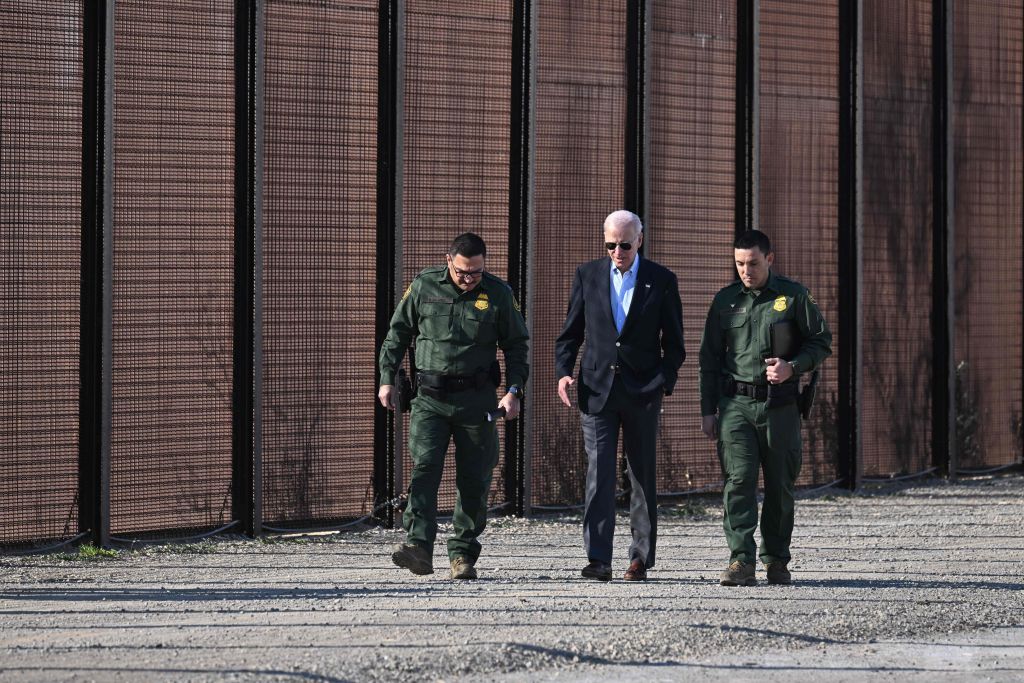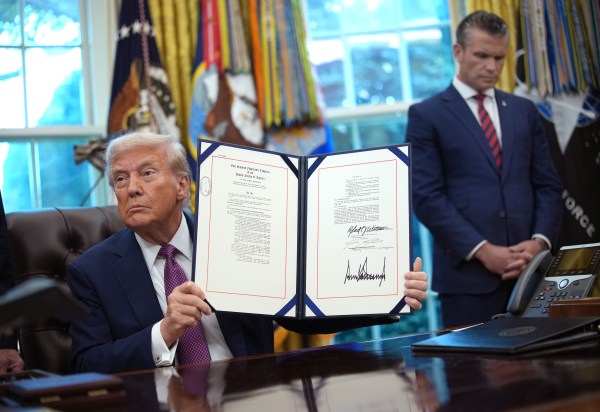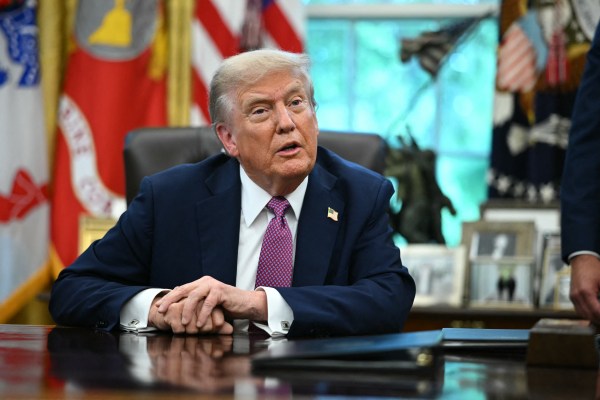The U.S. began the new year facing the highest monthly number of migrant encounters in the 21st century: more than 300,000. Monthslong bipartisan negotiations led by Sens. James Lankford, Chris Murphy, and Kyrsten Sinema culminated in legislation meant to meter the tide of new asylum applications and supplement the processes and personnel needed to tackle mushrooming backlogs.
But recognizing the border crisis is a political liability for President Joe Biden in an election year, congressional Republicans and former President Donald Trump—despite previous statements clamoring for congressional action on immigration—tanked the legislative effort, angered voters, and created new questions about the president's authority on immigration.
Now, many Republicans suggest it’s the president’s responsibility to use existing authorities to unilaterally “close” the border. “The historic crisis at our Northern and Southern Borders is by design and Joe Biden is to blame,” Rep. Elise Stefanik tweeted last week, citing an article from The Federalist. Though the article’s headline is unequivocal—“Biden Has The Power To End The Border Crisis Without Congress. He Just Doesn’t Want To”—the claim that “[w]ith one stroke of a pen, our commander-in-chief could authorize the return of law and order to our border by shutting it down” is dubious. Tellingly, that sentence does not include a citation simply because the scope of executive authority is a complicated issue that cannot be boiled down into a catchy sentence.
House Speaker Mike Johnson tweeted about the suite of authorities available to the president on immigration—“Presidential Authority to Restrict Entry 212(f) [...] Expedited Removal 235(b)(1) [...] Discretionary Detention Authority 236(a) [...] Mandatory Detention 236(c)”—and said Biden was either “lying or misinformed” about the scope of this authority.
But even President Trump never “closed” the border, despite his best efforts to use and expand executive authorities. At the height of the pandemic and during the Title 42 emergency that “shut down the border,” the U.S. processed more than 1,000 new principal asylum filings and admitted more than 2,500 refugees between August and September 2020 during one of the most restrictive periods of immigration in our history.
Trump was stymied primarily by statutory limits set by Congress and clarified by the courts. Notably, the Constitution does not reference any presidential authority over regulating immigration, but Section 8 of Article 1 states that Congress has the power “to establish an uniform Rule of Naturalization, and uniform Laws on the subject of Bankruptcies throughout the United States.” Throughout the 19th and 20th centuries, the Supreme Court enshrined the breadth of congressional authority to regulate migration and pass sweeping laws that include the ability to exclude, admit, and deport foreign nationals.
Over the years, Congress has expressly delegated a significant amount of authority on immigration to the president, primarily through the Immigration and Nationality Act (INA) of 1952, some of which was cited by Speaker Johnson. The so-called “212(f)” authority allows the president discretion to impose entry restrictions—such as a travel ban—without the need for congressional approval. The scope of this authority was confirmed in the “Muslim travel ban” case, Trump v. Hawaii, in which the Supreme Court found that the president has the power to exclude the arrival of foreign nationals who might cause harm to the U.S. This authority is arguably the most robust authority available to the president for advancing national security and foreign policy goals, but it does not allow a president to override other laws passed by Congress, including ones pertaining to the right to claim asylum on U.S. soil.
Myriad emergency powers also bolster the president’s authority to enact changes to immigration policy. In the 1976 National Emergencies Act (NEA), Congress delegated the authority to activate 123 statutory authorities—such as “giving the president the power to take over domestic communications, seize Americans’ bank accounts, and deploy U.S. troops to any foreign country”—when the president declared a national emergency. But Congress can claw back some of those authorities—as has been attempted before—suggesting that although a president can try to use an emergency authority to close the border, any such move would likely face new legislation from Congress and judicial review.
Congressionally delegated INA powers also give the president a wide berth for setting new policies. For example, the INA allows the Department of Homeland Security to send migrants arriving from Mexico or Canada back to those countries pending removal proceedings, to detain certain migrants, and to criminally prosecute migrants for improper entry. Notably, these are enforcement powers meant to ensure proper processing procedures, not authorities that can entirely stop those who may legally enter to claim asylum, suggesting that these authorities do not override existing law that allows for certain entries on U.S. soil.
Famously, some of the provisions meant to ensure enforcement of U.S. immigration laws were warped into efforts to deter migration, like separating families and implementing the Migrant Protection Protocols (MPP) that forced migrants to wait in Mexico while awaiting an asylum decision (also referred to as the “Remain in Mexico” policy). Abhorrent outcomes associated with the separation of families and resultant public outcry forced the Trump administration to end family separation before a court decision on the merits. The Biden administration recently settled the class-action suit brought by parents and children subject to the program.
Though challenged, the MPP program did withstand judicial scrutiny through 2021, and the courts even went so far as to ban the Biden administration from terminating MPP for a time due to administrative insufficiencies and lack of justification for its termination, which the Department of Homeland Security later cured. Yet, when the Biden administration proffered a similar rule in March 2022, the courts immediately stymied it.
In a discussion about their book, The President and Immigration Law, Adam Cox and Cristina Rodríguez discuss how narrow “interstitial bureaucratic authorities” have been used to effect a broader suite of policy changes. One example of this is the Deferred Action for Childhood Arrivals (DACA) program created by the Obama administration in 2012, which allows undocumented migrants who arrived as children to apply for protection from deportation. The authority to defer enforcement or create categories of priorities for enforcement is well-established. But conferring benefits associated with deferring enforcement, like work authorization and access to some in-state tuition and medical benefits, is the subject of a highly anticipated Supreme Court decision on the future of the DACA program.
Similarly, though the statutory parole authority granted to the president by Congress has been used extensively in the past, its use has recently been (arguably) inflated by the executive. Per the INA, a president may authorize legal entry and presence under the parole authority “for emergent reasons or reasons deemed strictly in the public interest.” In 1996, the Illegal Immigration Reform and Immigrant Responsibility Act (IIRIRA) limited the parole provision “on a case-by-case basis for urgent humanitarian reasons or significant public benefit.” The parole authority has been used for families of military members, Central American minors, and the family members of U.S. citizen Filipino World War II veterans.
Most recently, however, Biden used the parole authority to provide two years of parole to individuals from Ukraine and Venezuela and then to Cuban, Haitian, and Nicaraguan nationals (the parole programs for all but Ukrainians became known as the CHNV parole program). Though no states challenged the parole program for Ukrainians, Texas and 21 other states challenged the administration’s use of parole in the CHNV program, which has authorized the arrival of 30,000 nationals from the four countries every month.
By design, the legislative and judicial branches impose significant restrictions on what a president can do on immigration, even though the executive branch has been delegated specific authorities in the space and has also been granted broad discretion by the judiciary. Ultimately, most of what presidents want to accomplish on immigration is impossible without Congress appropriating funds to increase personnel, bolster processing, build and improve infrastructure, and fund the agencies responsible for processing.
Apart from legal constraints, another unquestionable hurdle is how willing our international partners in immigration, namely Mexico, are to cooperate with our policies. There is little question that Mexico must agree to programs like MPP and expedited removals for them to operate realistically. In the past, Mexico has acquiesced, but more recently, our new largest trading partner is demanding the U.S. “suspend … the US blockade of Cuba, drop … all sanctions against Venezuela, and give … work permits and protection from deportation to at least 10 million Hispanic people living in the US.”
Although the executive branch has significant powers in setting immigration policy, the president cannot act unilaterally to “close” the border. Without Congress to fund the measures, they will be inadequate. And without sound policy development that includes Congress, changes made solely by the executive may not survive judicial scrutiny.






Please note that we at The Dispatch hold ourselves, our work, and our commenters to a higher standard than other places on the internet. We welcome comments that foster genuine debate or discussion—including comments critical of us or our work—but responses that include ad hominem attacks on fellow Dispatch members or are intended to stoke fear and anger may be moderated.
With your membership, you only have the ability to comment on The Morning Dispatch articles. Consider upgrading to join the conversation everywhere.